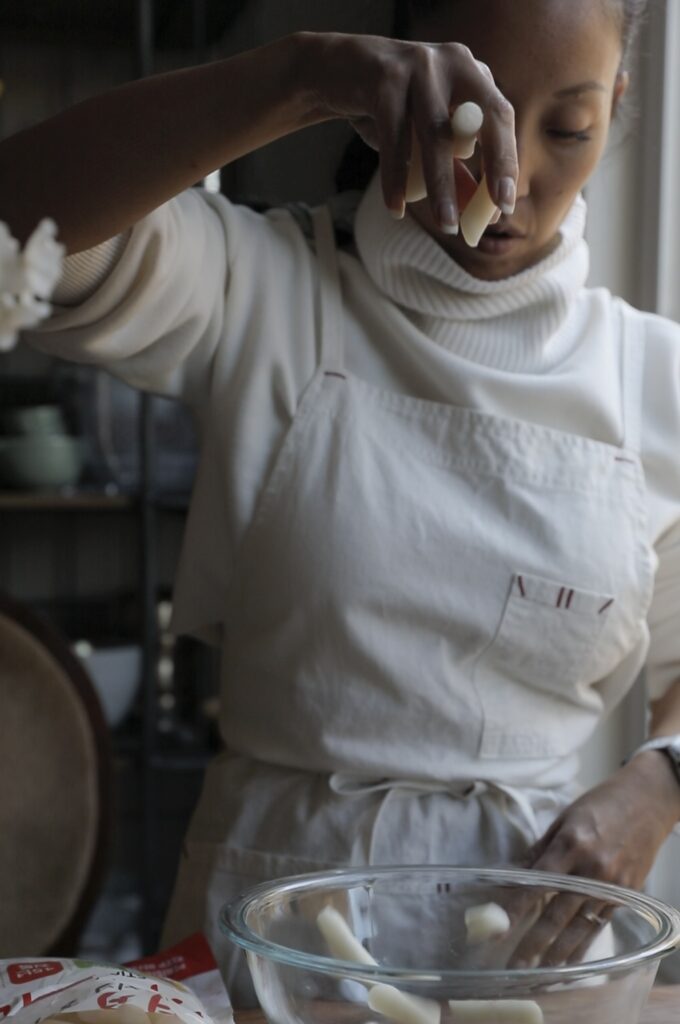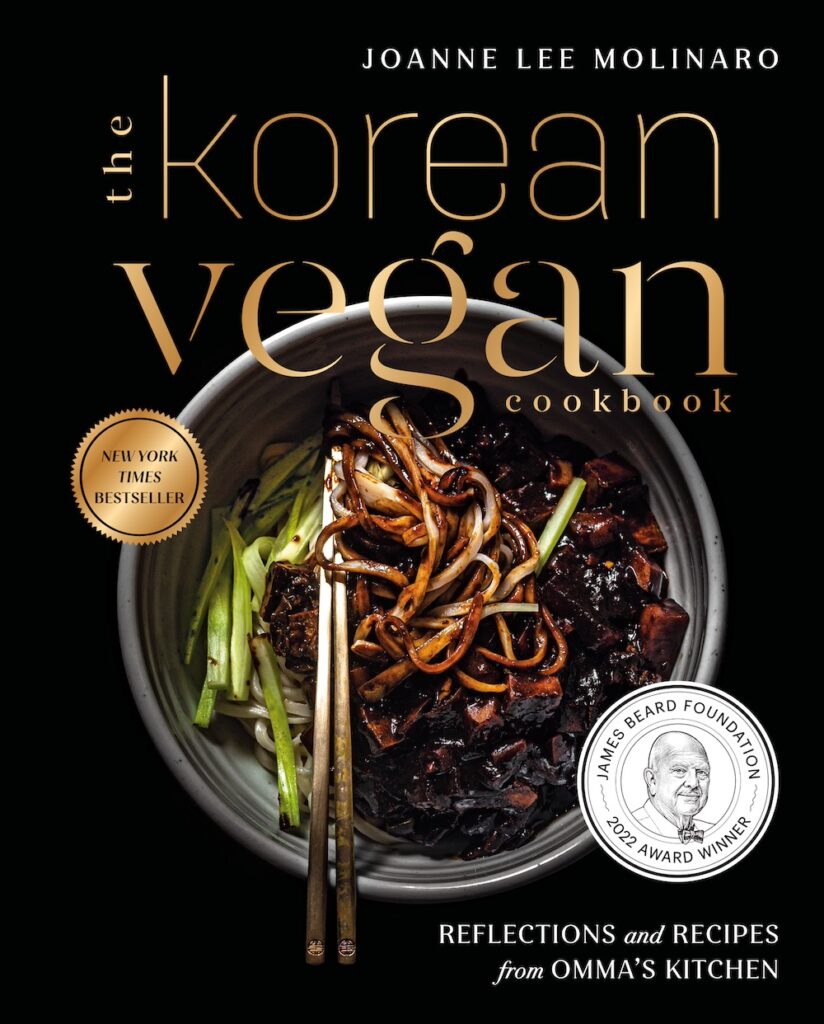Strawberry Mochi
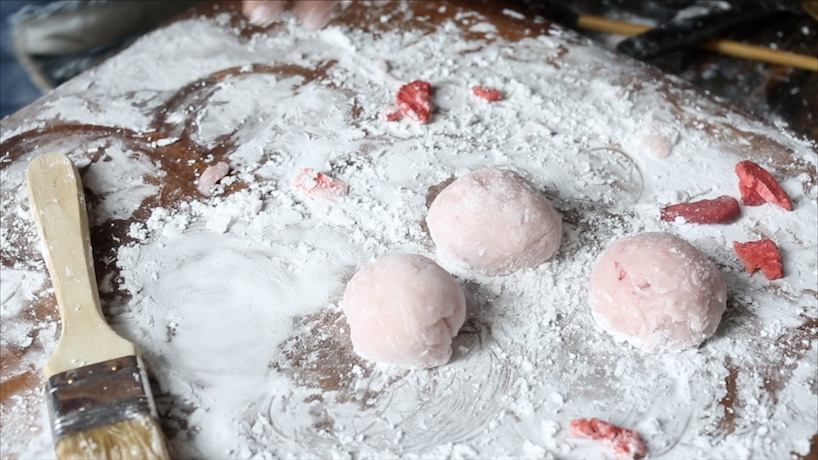
Desserts in our house consisted of rice cakes or mochi (when it wasn’t just plain fresh fruit). You would often hear in my household, “It’s too sweet!” So, we didn’t grow up eating chocolate cakes or pies or other sugary pastries. Rice cakes are naturally gluten free, low in sugar, and are designed to be eaten by hand (i.e., come in small bite sized pieces). Therefore, they are an easy go-to dessert when I’m trying to keep things more balanced.
Disclaimer: Links in this post may be affiliate links for products I use and love. If you make a purchase after clicking one of those links, I may earn a small affiliate commission, perhaps enough to buy some extra gochujang or gochugaru ?
What Is Mochi?
Mochi is a Japanese rice cake made out of a short-grain japonica glutinous rice. The rice is pounded into a paste and molded. It is a traditional ceremonial dish in Japan and can often take a great deal of labor (lots of pounding) to make. Here, we are going to use the help of already ground rice and the microwave to avoid pulling our muscles. However, if you ever visit Japan or even “Japan towns” (like in Manhattan or Los Angeles), you can try traditional mochi, which is delicate on the outside and soft on the inside (almost like taffy). It’s gluten free, dairy free, and very low in sugar.
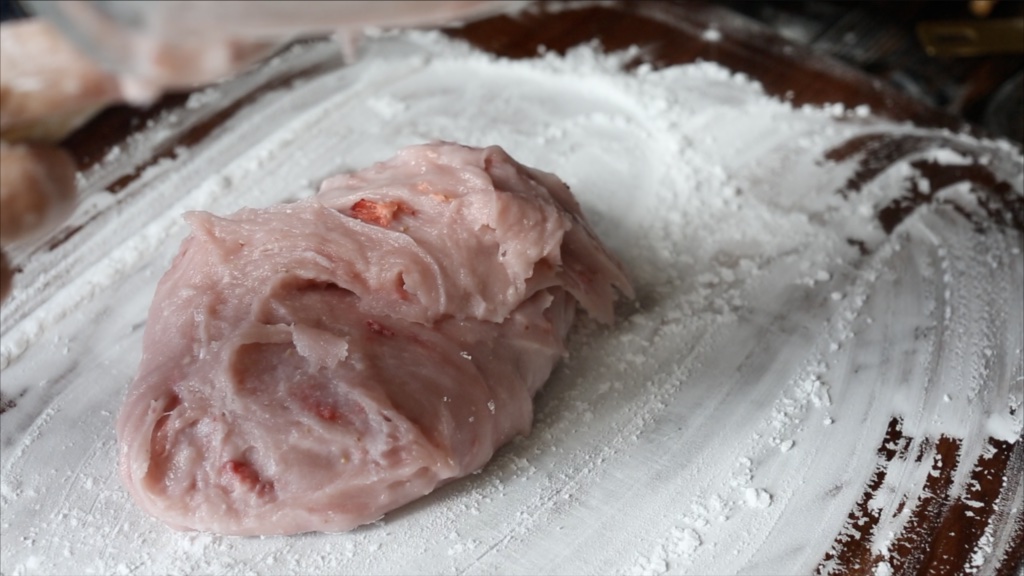
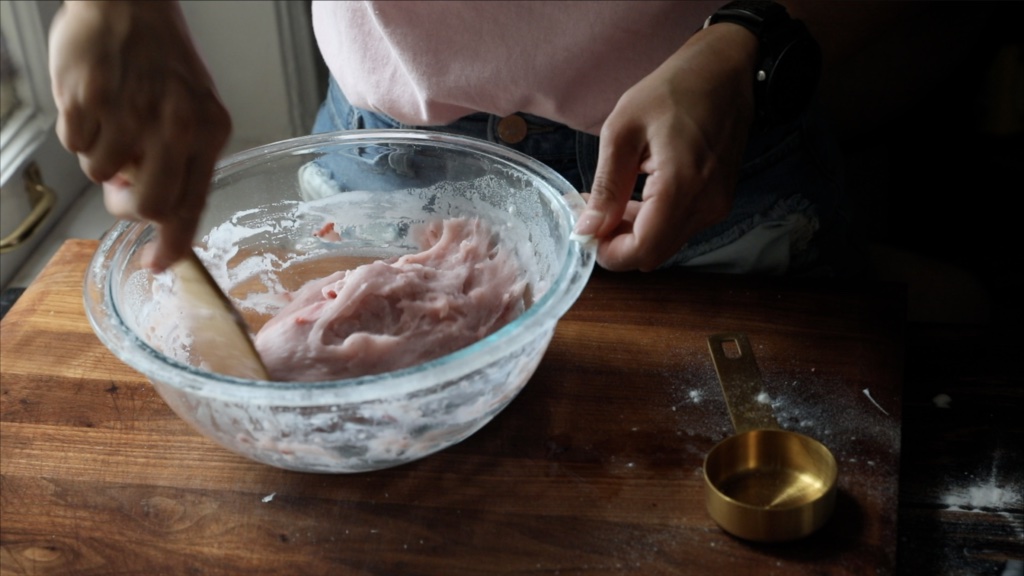
How To Make Mochi.
The flour mix is super simple: sweet white rice flour, a little sugar, and salt. That’s it. However, it is very very important that you use the right kind of white rice flour. As stated above, traditional mochi is made out of a particular kind of rice–short grain glutinous white rice. Accordingly, this recipe will not work if you use regular white rice flour. Mochiko is a popular brand that will work perfectly for this recipe.
How to Make Strawberry Mochi.
Most recipes I’ve seen call for the use of food coloring to make pretty pink mochi. But I really wanted to keep my recipe all natural. Cue: freeze dried strawberries. In lieu of food coloring, I added strawberries to the flour mix and it worked like a charm. Not only did it provide the perfect rosy complexion to my mochi, it also added a hint of lovey tartness.
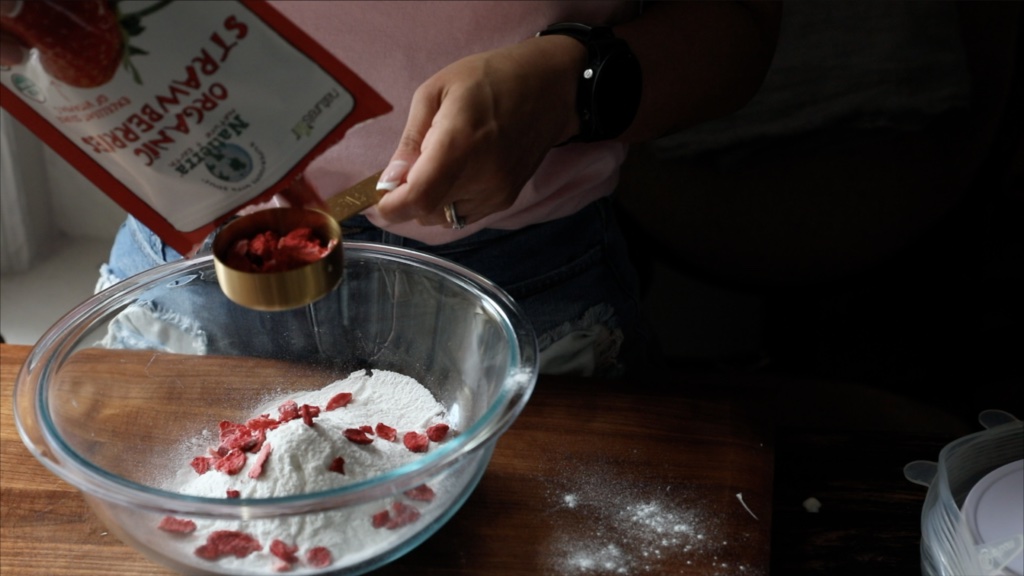
Next, you just add some water to the flour mix and stir. You stick the bowl in the microwave a couple times to assist with the steaming process, and before you know it, you’ll have a beautiful dough to work with. Now, the hardest part about this recipe is definitely working with the dough. It’s sticky, unwieldy, and largely uncooperative. Enter: potato starch. Potato starch is lighter than corn starch and works very well at keeping the dough not only supple, but still light.
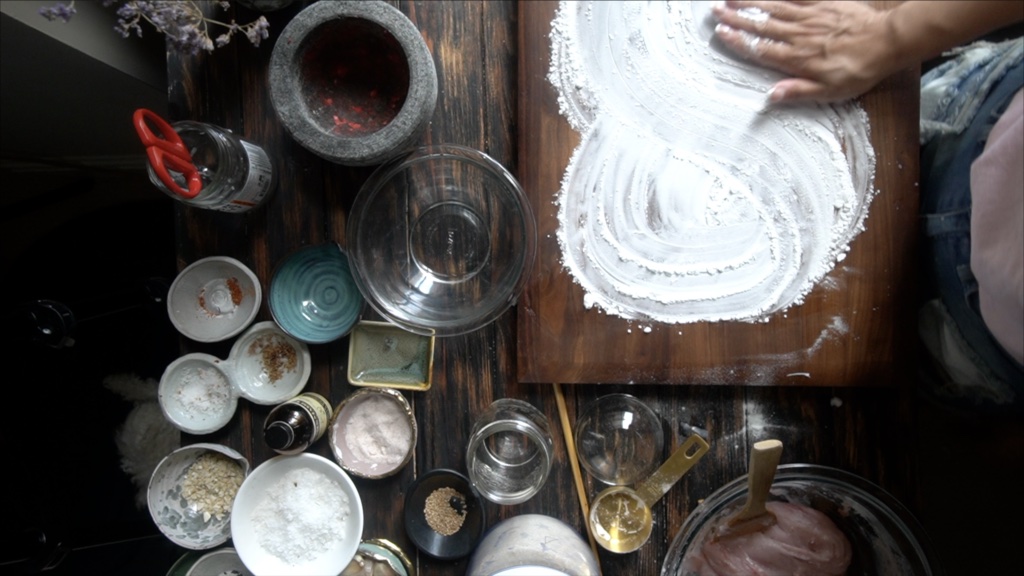
Apply the potato starch liberally to your working surface, as well as your hands to prevent it from sticking to itself and your fingers. Then, all you have to do is create beautiful dough balls out of your mochi. I like to create a ring with my thumb and index finger, and gently squeeze a piece of mochi through the ring to create a dome. I then pinch the bottom and roll it gently across the surface to close the seam.
Dust each ball with a little more potato starch, as necessary, and pop one in your mouth. You will love it.
Quick Tips on Making Strawberry Mochi.
- Do not try and use anything other than sweet white rice flour (also called “glutinous white rice flour”)
- Utilize dried strawberries in lieu of food coloring–you won’t need the latter for color
- Apply potato starch to your working surface and hands to avoid sticking
- Create a ring with your thumb and index finger and press the dough through the ring in order to create desired shape
Video
Recipe Card
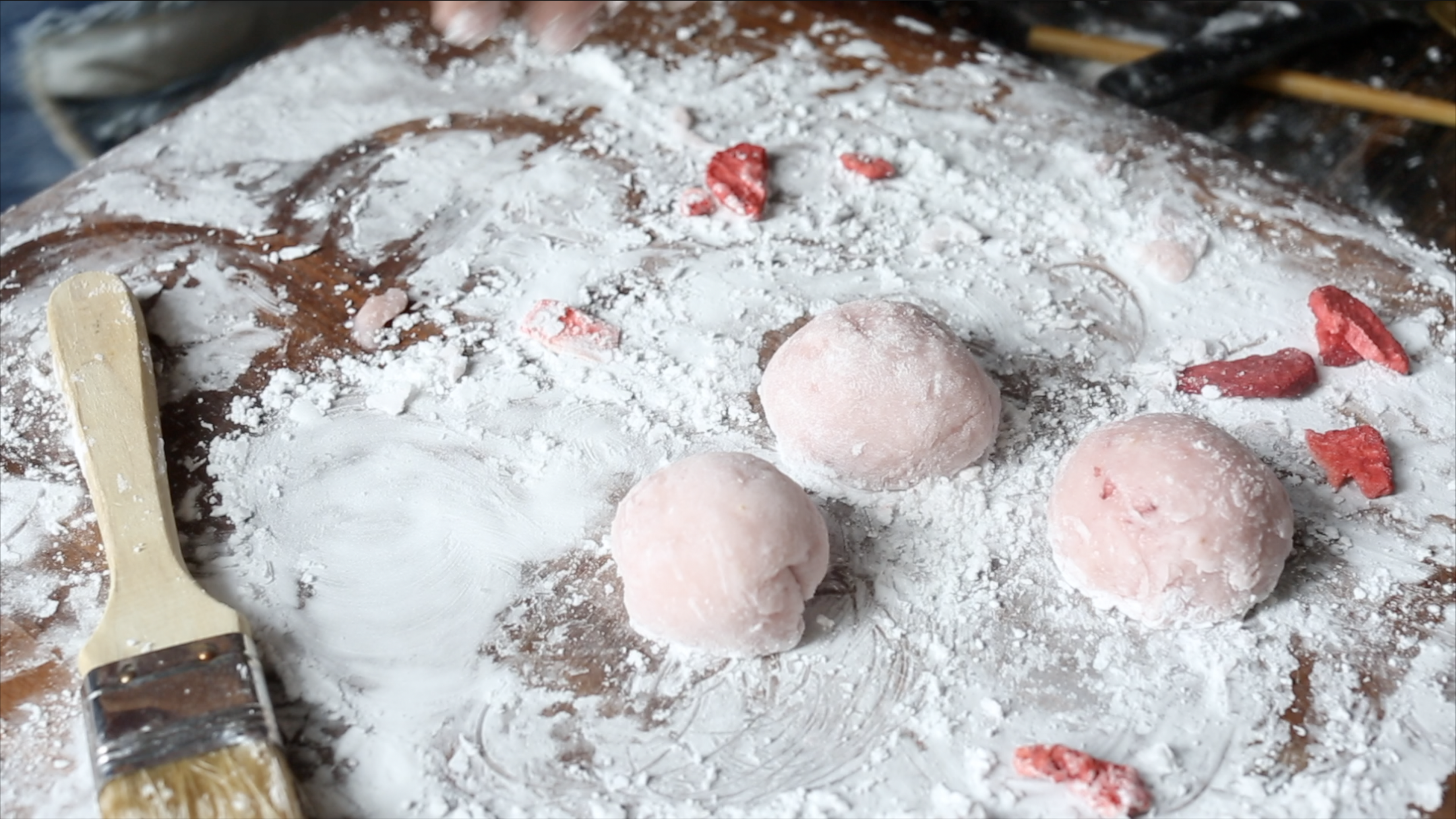
Strawberry Mochi
Equipment
- Microwave
Ingredients
- 1/2 cup dried strawberries
- 1 1/2 cup sweet white rice flour (regular white rice flour will not work)
- 1/4 cup sugar
- 1/4 tsp sea salt
- 1 cup potato starch
Instructions
- Add 1/4 cup of the dried strawberries into a food processor or grinder. Grind into a course powder.
- Add the sweet white rice flour, sugar, salt, unground dried strawberries, and ground strawberries into a large microwave safe bowl.
- Add 1 1/4 cup water and stir. Cover the bowl and place in the microwave for 1 minute. Remove from the microwave and stir. It should be thick and slightly translucent around the edges.
- Place the bowl back in the microwave for another 45 seconds. Remove and stir with a wooden spoon. At this point, it should be very sticky and hard to mix. If it's still loose, add 2 tablespoons of white rice flour, stir, and place back in the microwave for another 15 seconds until sticky consistency is achieved.
- Pour 1/2 cup of the potato starch onto your working surface. Empty the contents of the bowl onto your surface and shape the dough into a ball. The dough will be incredibly sticky, so apply additional potato starch to your hands as necessary.
- Divide the dough equally into four pieces. Then, divide one quarter of the dough into thirds. Working with one piece, shape the dough into a ball by shaping your index finger and thumb into a ring and pressing the dough through the ring. (See video below). Repeat with each of the pieces.
- Dust each piece with a little extra potato starch before serving.

